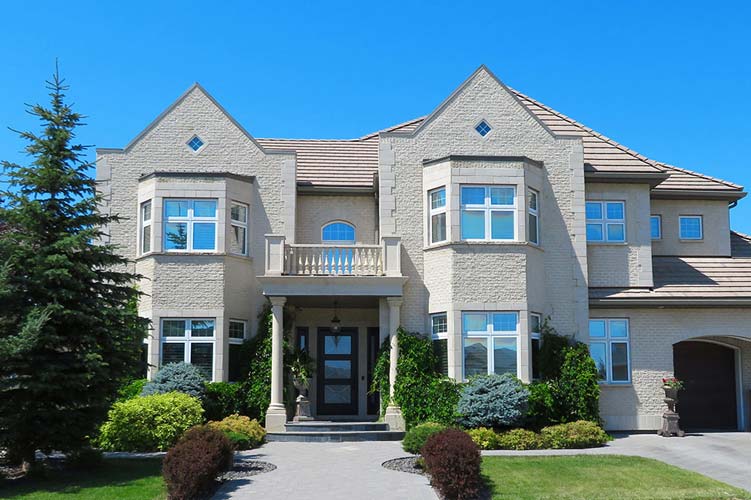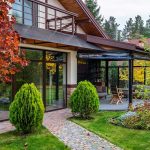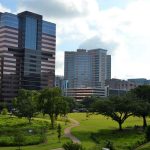Residential landscaping has evolved far beyond the traditional concept of simply planting a few flower beds and maintaining a lawn.
Today, it plays a pivotal role in enhancing both the aesthetic and functional aspects of home living. It’s an art form that transforms outdoor spaces into extensions of the home, reflecting personal style, lifestyle needs, and a connection with nature.
Often, when people think of landscaping, they primarily picture lush greenery, vibrant flowers, and well-trimmed hedges. While plants are undoubtedly a fundamental component, modern residential landscaping encompasses much more. It’s a holistic approach that considers every element of outdoor space and how it interacts to create a harmonious, inviting, and practical environment.
But what exactly are these various elements that constitute modern residential landscaping? This question leads us to a broader exploration of the topic. From the integration of hardscaping elements like patios and walkways to the incorporation of water features, lighting, and outdoor structures, there are numerous dimensions to consider.
Additionally, there’s a growing emphasis on sustainability and eco-friendly practices in landscaping, which adds another layer of complexity to designing residential outdoor spaces. As we delve into this topic, we’ll uncover the myriad of ways in which landscaping can enhance not just the beauty but also the usability and environmental friendliness of our home environments.
Hardscaping – The Foundation of Landscape Design
Hardscaping refers to the structural elements used in landscaping, like patios, walkways, fences, and retaining walls. It forms the foundation that supports and enables the softer plant features. Hardscaping also serves functional purposes, from delineating spaces to facilitating access and movement.
There are limitless options for hardscaping materials like natural stone, concrete, brick, gravel, timber, metals, and more. Elements can range from simple gravel pathways to dramatic multi-level patios and decking. Water features like pools, fountains, and ponds also qualify as hardscaping. Thoughtful hardscaping transforms a patchy yard into a cohesive landscape.
Outdoor Living Spaces
One of the biggest landscaping trends is creating dedicated outdoor living spaces. These extend the functional area of the home and provide space to relax, entertain, or pursue hobbies. Popular elements include outdoor kitchens, dining areas, lounging spaces, fire pits, bars, hot tubs, and media zones. With the right lighting and heating, these spaces can be enjoyed day or night, season after season.
Carefully designed hardscaping and softscaping come together to form beautiful yet practical outdoor “rooms.” They provide the perfect backdrop for everyday living or special occasions. Outdoor spaces also enable connection with nature and can have therapeutic benefits. With so much potential, it’s no wonder outdoor living areas are a top priority for many homeowners.
Lighting and Aesthetics
Outdoor lighting serves both practical and aesthetic purposes. Path lighting provides visibility and safety while accent lighting highlights architectural or landscaping features. Uplighting in trees creates dramatic effects. The variety of lighting fixtures and bulbs allows for creativity. Considerations include fixture styles, placement, brightness, and optimal lighting times.
Lighting is crucial for extending outdoor use after dark. It sets the mood and transforms spaces through highlights and shadows. Lighting also boosts security. Automated systems allow for scheduling seasonal or daily lighting times. Investing in outdoor lighting pays dividends for both beauty and function.
Eco-Friendly and Sustainable Practices
Sustainable landscaping using eco-friendly practices is a growing priority. Lazy expanses of thirsty grass are being replaced with native plants suited to the local climate. Strategic plant placement also boosts energy efficiency by providing shade and windbreaks.
Other green practices include rainwater harvesting, drip irrigation, mulching, and composting. Limiting pesticide and fertilizer use protects local ecosystems. Sustainable materials include renewable or recycled hardscaping products. With planning, residential landscapes can impart natural beauty while also benefiting the environment.
Technology Integration in Landscaping
Technology is transforming outdoor spaces much like it has indoors. Automated irrigation systems precisely deliver water when and where needed using smart controllers. Remote monitoring provides control and troubleshooting. Buried LED lighting offers long-life reliability.
Other technological advancements include robotic lawnmowers and self-cleaning pools. Forthcoming tech could integrate rain sensors, temperature controllers, and plant health monitors. Voice and mobile app controls provide convenience and responsiveness. Integrating technology into landscapes results in healthier plants, efficient operations, and less work.
Personalization and Themes
An appealing benefit of residential landscaping is the ability to personalize designs. Homeowners can opt for a minimalist desert oasis or go for lush, ornamental gardens. Tropical or Asian-inspired landscapes are transportive. Cottage-style gardens evoke cozy rural vibes. Designs can also be themed around pollinators, vegetables, or herbs.
Personal elements like custom arbors, pergolas, ornamental stones, or sculptures tie spaces together. Favorite plants and colors convey individuality. There are endless ways to put a personal stamp on outdoor living spaces, limited only by imagination and budget. A thoughtfully personalized landscape feels like an extension of the self.
Conclusion
Creating an attractive, functional residential landscape requires considering numerous elements and their synergistic effects. Hardscaping and softscaping must seamlessly integrate. Outdoor living spaces necessitate planning for activities and ambiance. Lighting has aesthetic and practical implications. Sustainable practices benefit homeowners and the environment. Technology enables efficiency and control. Personal touches turn sterile spaces into comfortable, inviting outdoor rooms. With so many possibilities, residential landscaping is an exciting arena for creativity and self-expression. The results can transform an everyday house and yard into a true home and oasis.



